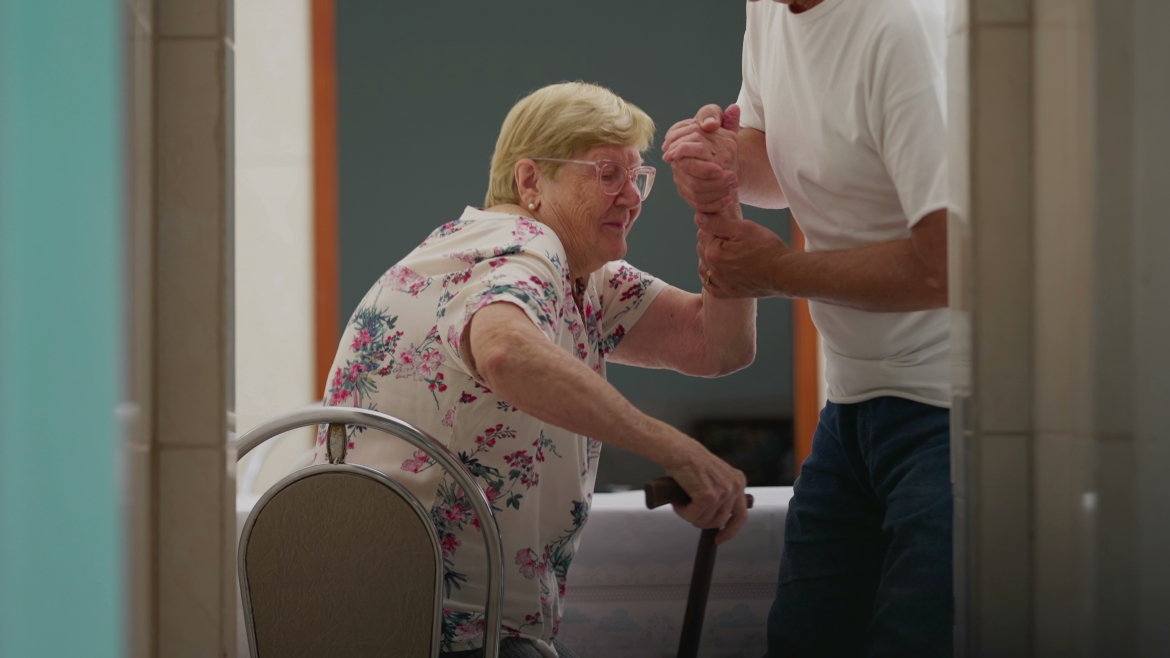Did you know that Leading Edge Senior Care has a Dementia Support Group? We meet monthly in Mesa. For more details <click here>
When Is It The Best Time To Use A Hoyer?
When Is It The Best Time To Use A Hoyer?
Caring for seniors, especially those with limited mobility, requires careful consideration and the use of appropriate tools. One such tool that plays a crucial role in ensuring the safety and comfort of both seniors and caregivers is a Hoyer lift. This specialized device is designed to assist with transferring and lifting individuals with mobility challenges. Knowing when and how to use a Hoyer lift can significantly enhance the caregiving experience while promoting the well-being of seniors.
Understanding the Role of a Hoyer Lift
A Hoyer lift, also known as a patient lift, is a mechanical device that helps lift and move individuals with mobility issues, such as seniors with limited strength or those who are unable to bear weight on their own. It consists of a metal frame, a hydraulic pump, and slings or straps that cradle the person during the transfer. Hoyer lifts are particularly useful for activities like transferring from a bed to a wheelchair, moving to a commode, or getting into a bath.
Determining the Right Time to Use a Hoyer Lift
- Assessing Mobility: The decision to use a Hoyer lift should be based on the senior’s mobility level. If the senior has difficulty standing, bearing weight, or coordinating movements, a Hoyer lift may be appropriate. It’s important to consider the individual’s specific needs and abilities.
- Safety Concerns: Safety is paramount when determining the best time to use a Hoyer lift. If manual transfers pose a risk of injury to both the senior and the caregiver, it’s advisable to opt for a Hoyer lift. This is especially true when dealing with seniors who have a history of falls or fractures.
- Rehabilitation and Recovery: After surgery, injury, or a medical procedure, seniors may have limited mobility during the recovery phase. A Hoyer lift can aid in transfers while allowing the individual to heal without strain. Consult a healthcare professional to determine the appropriate timing for Hoyer lift use during rehabilitation.
- Promoting Independence: While caregivers play a crucial role, it’s important to promote a sense of independence in seniors. A Hoyer lift can empower the individual to participate in transfers with the assistance of a caregiver, enhancing their self-esteem and well-being.
The Process of Using a Hoyer Lift
- Preparation: Before using a Hoyer lift, assess the senior’s needs and the specific transfer that needs to take place. Ensure the lift is assembled properly, and the slings are appropriately attached.
- Positioning: Gently guide the senior into a seated or reclined position, depending on the transfer. Slide the sling under them, making sure it’s comfortable and properly aligned.
- Lifting: Engage the hydraulic pump to slowly lift the senior off the surface. Ensure the senior feels secure and comfortable throughout the process.
- Transfer: Carefully move the senior to the desired location, such as a wheelchair or a commode. Take your time and make sure they are settled comfortably.
- Lowering: Once the transfer is complete, gradually lower the senior onto the new surface. Double-check their comfort and adjust the sling as needed before removing it.
Conclusion
A Hoyer lift can significantly improve the quality of care provided to seniors with mobility challenges. By understanding when and how to use a Hoyer lift, caregivers can ensure the safety, comfort, and dignity of their loved ones or clients. Whether it’s aiding in daily activities or facilitating rehabilitation, a Hoyer lift is a valuable tool that contributes to the overall well-being of seniors.
Remember, consulting with healthcare professionals and receiving proper training on Hoyer lift usage is essential to ensure effective and safe transfers.

